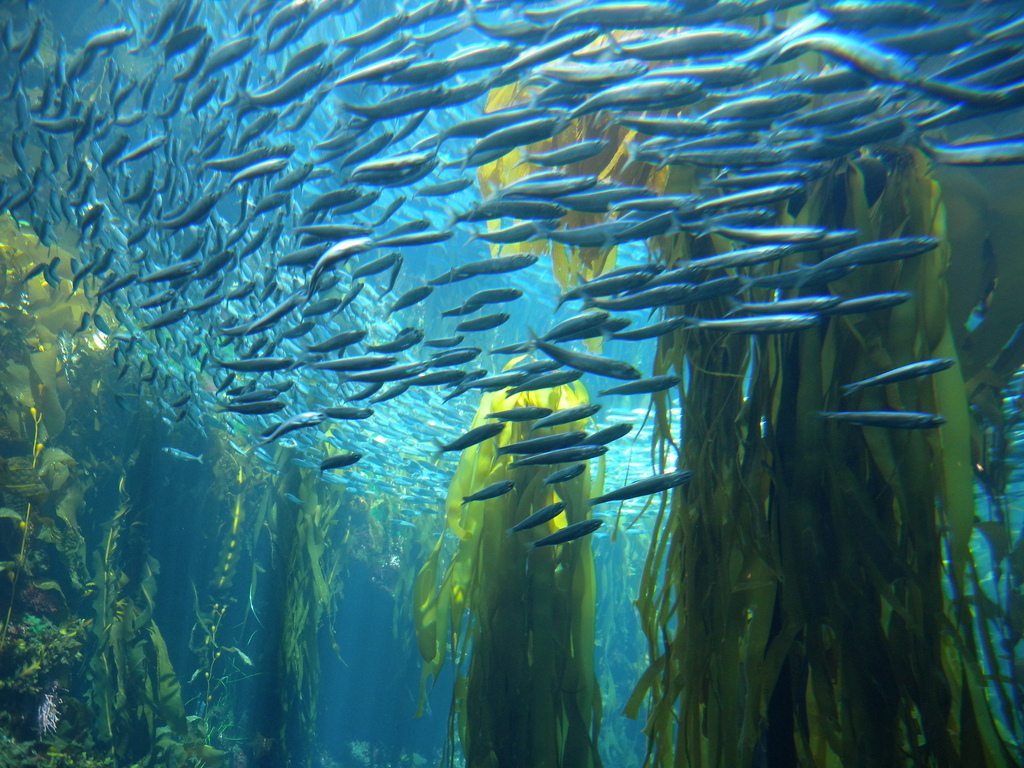

Cockroach of the sea. By the end of the century, the rats and cockroaches of the sea—small, aggressive sea creatures scientists call “weedy” species—may dominate the depths. That’s according to a study published Thursday in Current Biology that examines the effects of ocean acidification on marine environments. For marine biologist Ivan Nagelkerken, a future abundance of weedy fish doesn’t bode well for seafood circa 2100. “There’ll be plenty of them around but no-one really wants to eat them,” he said in a press release.
Ocean acidification, which the cheerful narrator of the study’s accompanying explainer video calls “global warming’s evil twin,” happens when seawater absorbs carbon dioxide (CO2) from the atmosphere. The National Oceanic and Atmospheric Administration (NOAA) estimates the world’s oceans absorb about a quarter of CO2 emissions; according to our narrator, human activities have already increased the ocean’s acidity by 30 percent.
We already knew that ocean acidification comes with side effects. For instance, scientists have found that lower pH levels are harmful to species at the bottom of the food chain including oysters, corals, and the “sea butterflies” that salmon rely on. But most research has focused on lab simulations that look at only one or two species at a time. Not much is known about how acidification impacts whole underwater communities that are home to hundreds of different species. If carbon-loving sea grass thrives with a little extra CO2, for instance, will it choke out neighboring kelp forests? If so, what happens to the jellyfish that lives in that forest? Or the sea turtle that eats the jellyfish?
To answer some of those questions, researchers at the University of Adelaide in Australia decided to look at aquatic environments that already mimic acidification predictions for the year 2100. An island off the coast of New Zealand proved a perfect testing site: Offshore volcanic vents spit out CO2, creating a micro-environment where the seawater closely matches estimated end-of-century pH levels. Just 25 meters away, CO2 levels are unaffected by the vents, providing an experimental control. The researchers monitored these sites for three years to see how acidification might affect interdependent species across the food chain.
They found that heightened CO2 levels make a big difference in marine environments. Sea grasses took over an ocean floor that used to be dominated by kelp, which meant habitats disappeared for a lot of predators. And a sudden dearth of predators meant exploding populations of bottom-of-the-food-chain species like snails and small crustaceans.
Extra snails were good news for middle-of-the-food chain fish, since they suddenly had more to eat. And the species that could get to the snails the fastest (or could beat out the other guy in a scuffle) did really well. The test sites near to the carbon-emitting vents were home to more fish overall than the control sites.
But more food also meant that the aggressive fish—the first to the snail buffet—reproduced more quickly. And without the kelp-loving predators to keep populations in balance, “weedy” fish beat out other, less common, less aggressive middle-of-the-food-chain species. So even though there were technically more fish in the acidified waters, most of those fish were the types who would elbow you to get to the front of the line in a high school cafeteria. The jock fish proliferated and the shy fish died out. Biodiversity decreased.
“We showed how diminishing predator numbers has a cascading effect on local species diversity,” Nagelkerken explains, in the release. Our cheerful narrator’s plainspeak interpretation is a little more direct: “What they found was not good.”
Short of eliminating worldwide CO2 emissions, the researchers recommend enforcing policies that prevent overfishing predator species. That way, they’ll stay in the water and continue to eat the cockroach-fish. Which means we won’t have to.
Grist, an award-winning, nonprofit media organization dedicated to highlighting climate solutions and uncovering environmental injustices,…
Every year, California dairy farms emit hundreds of thousands of tons of the potent greenhouse…
Highway 7 runs north-south through western Washington, carving its way through a landscape sparsely dotted…
One of the greatest pleasures I had as a child growing up in the Chicago…
Undocumented immigrants experience food insecurity at much higher rates than other populations, yet they are…
Writer Charlotte Druckman and editor Rebecca Flint Marx are both Jewish journalists living in New…